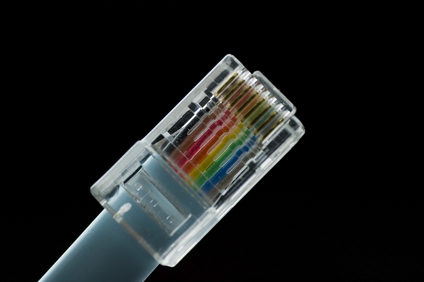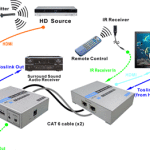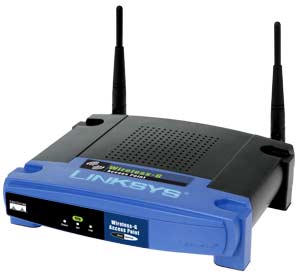
Comparing Cat 7 to the Other Cats
 Nowadays offices and homes utilize either a wireless (Wi-Fi) connection or wired network connection. Usually faster than Wi-Fi, wired connections also have lower latency. These two types of network connection continue to progress technologically, providing users ever increasing speeds.
Nowadays offices and homes utilize either a wireless (Wi-Fi) connection or wired network connection. Usually faster than Wi-Fi, wired connections also have lower latency. These two types of network connection continue to progress technologically, providing users ever increasing speeds.
In the case of home networks, the speed of the internet connection is typically the issue, and the cabling may not be a factor. However, a company must consider the specifications of particular cables and how these would meet its requirements in order to properly decide which to select. There can be a vast difference between the network speeds of the various Ethernet cables.
Types
Cables are differentiated by standard categories. Category has been abbreviated to “Cat” by the industry. Currently, the most common cables in use are Cat 5, Cat 5e, Cat 6, and Cat 6a. The newest type is Cat 7. Every type is backward compatible, allowing users to insert a newer cable into a device that was manufactured for an older cable without any compatibility issues arising.
Progress
With every new cable category, users were provided increased speed and decreased crosstalk. Newer category cables provided faster speeds at increased lengths of cable. The following offers comparisons at 100 meters of cable, illustrating the differences between the ethernet cable categories:
Cat 5 - Considered slow and inadequate for business networks, providing up to 100 Mb/second at 100 Mhz.
Cat 5e - provides up to 1 Gb/second internet speed at 100 Mhz.
Cat 6 -provides up to 1 Gb/second, and cable lengths up to 55 meters can give internet speeds of 10 Gb/second at 250
Cat 6a -can provides speeds up to 10 Gb/second, to 100 meters of cable length, at 500 Mhz.
Cat 7 - provides speeds up to 10 Gb/second to 100 meters of cable, at 600 Mhz.
History
Cat 5 was the standard in 1995, Cat 5e became standard in 2001, and Cat 6 was introduced in 2002. Arriving in 2008, Cat 6a is typically the newest cable the majority of companies have used because it is not considered necessary to update to Cat 7 yet. Cat 7a and Cat 8, which were respectively released in 2010 and 2013, are still waiting in the wings.
Union Network Cabling
When union work requires a unionized cabling group, call on Union Network Cabling for your commercial Cat5e/6/6a and fiber cabling projects. We specialize in cabling for data, voice, security and even the latest WiFi and LiFi solutions. Phone: (202) 462-4290

Is it Practical to Use Cat6 Cable?
 Data volume has grown extensively. Also, the processing capacity to users continues to get grow. Specialists in data management forecast that information production will be 44 times larger in five years with enterprises needing to process and safeguard 80 percent of the new data.
Data volume has grown extensively. Also, the processing capacity to users continues to get grow. Specialists in data management forecast that information production will be 44 times larger in five years with enterprises needing to process and safeguard 80 percent of the new data.
Data Cables
For these reasons, you might need to become more familiar with different types of cabling. There is Category 5 (Cat5) cable but it is only capable of transmitting 1000 megabits data rate per second on an Ethernet network. Transfer of data demands are increasing due to new and more sophisticated applications. That is why many companies prefer to work with Category 6 (Cat6) cables. Cat6 has a maximum data transfer of 10,000 megabits per second. Cat6 is also backward compatible which means your Cat5 connectors will plug i and work (at the lower speeds).
Future Proofing
Cat6 infrastructure guarantees that your system will be relevant well into the future. This allows users to easily cope with any modifications, new features or technological developments. The Cat5 standard has been used for a long time. However, your enterprise needs adequate bandwidth to handle these continuing and future changes. It is not merely a possibility or “let's say” situation. It is to be anticipated as the online experience continues to progress.
Demand for Cat6 escalates as the world-wide web is now offering premium video streams, online applications, highly-responsive and media-heavy portals. If you decide to upgrade to a more reliable network, consider Cat6 cables. It is fast becoming the new standard in this industry.
Downsides
Cat 6 is more costly compared to Cat5e cables. On average, we are finding that projects cost about 20-25% more. This is because you are not guaranteed full speed unless all the components operate at gigabit speed. So, you need Cat6 cable, connectors, patch panels and Gigabit switches too. If one part is not rated as gigabit, the network will run at Cat5e speeds. Call or contact us to help you make this decision.
Nevertheless, experts say Cat6 will sooner or later surpass Category 5e. And the initial upfront costs will pay future productivity gains for many, many years to come.

Ethernet Wiring for Home Networking
 Although “Wifi" is simpler for a lot of people, due to multimedia sharing, bandwidth on some home networks, some users really want a hard-wired home networking solution. A wired network allows a private, high speed, network at home for Internet access, file sharing, media streaming, online gaming (console or PC), IP security cameras, or other standard Ethernet type wiring use.
Although “Wifi" is simpler for a lot of people, due to multimedia sharing, bandwidth on some home networks, some users really want a hard-wired home networking solution. A wired network allows a private, high speed, network at home for Internet access, file sharing, media streaming, online gaming (console or PC), IP security cameras, or other standard Ethernet type wiring use.
There are certain design considerations that need to be addressed based on needs. Answering these questions will affect quantities, tools and materials needed.
The basic questions are:
- Which room(s) do I want wired?
- How many ports do I want in each location?
- What is a good location for distribution?
If the internet comes over a cable into the house move the cable modem there so it will be able to supply internet access to the entire network. Another consideration is the amount of space needed to hold the network equipment.
- What path should the cables take?
This is the most difficult consideration. For single floor homes the basement may be the best path. For multi-story homes you have to be creative. Outside may be an option or use an old laundry chute. The other consideration is cable length. The max cable length for up to gigabit speeds over copper UTP cabling is 100 meters (300 feet). This should be plenty for most home applications.
- What network speed do I need?
This will determine what kind of switch to get. 10mbps is faster than most home internet connection. If you just “surf” the internet, use a 10 megabit switch. If you are planning on sharing multimedia over the network 100 megabit switches are available and reasonably priced. If you must have the fastest, go with a Cat6 Gigabit cable.

Benefits of Installing Network Cabling in Your Home
 Many homeowners question whether or not installing network cabling in their home is a necessity. If you’ve got multiple computers and multiple computer users in your home, networking your PCs and equipment can have a number of advantages.
Many homeowners question whether or not installing network cabling in their home is a necessity. If you’ve got multiple computers and multiple computer users in your home, networking your PCs and equipment can have a number of advantages.
One of the single biggest advantages of installing network cabling in your home is that it gives you the ability to share equipment, data and programs between computers. A non-networked home that has three regularly used PCs might also require three separate printers and three separate scanners. Installing network cabling allows all three PCs to access the same printer, scanner or just about any

Wireless Access at Hotel Saves Clients
 I met with the General Manager of a Holiday Inn in Northern Virginia. She manages a 200-unit building in Arlington, Virginia, an affluent suburb of Washington, DC. Her property provides rooms and facilities to handle meetings and conferences for vacationers and business travelers. She told me that she is trying to get wireless access installed into her building because she is losing business and wasting money.
I met with the General Manager of a Holiday Inn in Northern Virginia. She manages a 200-unit building in Arlington, Virginia, an affluent suburb of Washington, DC. Her property provides rooms and facilities to handle meetings and conferences for vacationers and business travelers. She told me that she is trying to get wireless access installed into her building because she is losing business and wasting money.
She said that her hotel is providing free Internet access but her competition is providing free wireless access. Clients and management prefer wireless because it is much easier to manage and access. Clients don't like having to plug in a cable and having to make changes to their network settings to enable network access. Management does not like having to deal with multiple failure points in managing the hundreds of routers spread throughout the building. There is one in each room.
So, they have a lot of complaints about Internet access. It is not convenient. Sometimes clients don't even have a patch cable. So, the problems are overwhelming for both sides. Additionally, they have Meeting and Conference Rooms that are not hard-wired. So, every time they schedule a Conference for a business client they also have to pay their Internet Service Provider (ISP) to extend a bundle of network cables into the Meeting and Conference Rooms. As you can imagine, this is a hassle and a large financial expense. It cuts into their profit margins. And it is also a major inconvenience for both the staff and the customers.
![]() We have presented a proposal to install network cabling and I expect to get approval in the coming weeks. It will save them time, money and reduce their efforts in providing reliable and fast Internet to their clients. I will update this posting as things progress.
We have presented a proposal to install network cabling and I expect to get approval in the coming weeks. It will save them time, money and reduce their efforts in providing reliable and fast Internet to their clients. I will update this posting as things progress.

